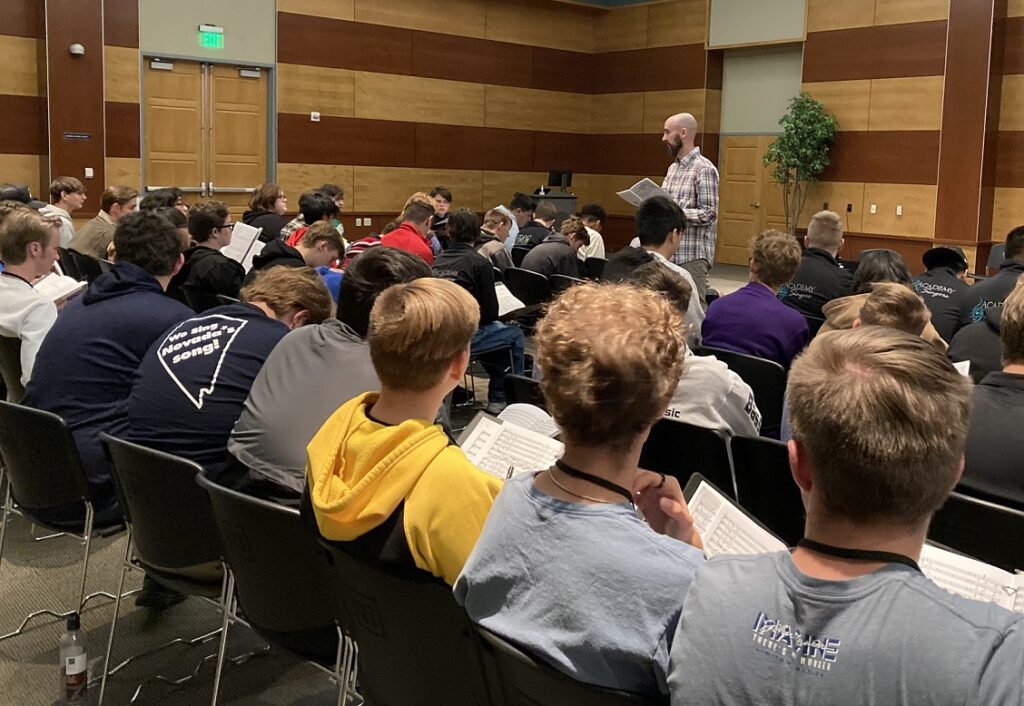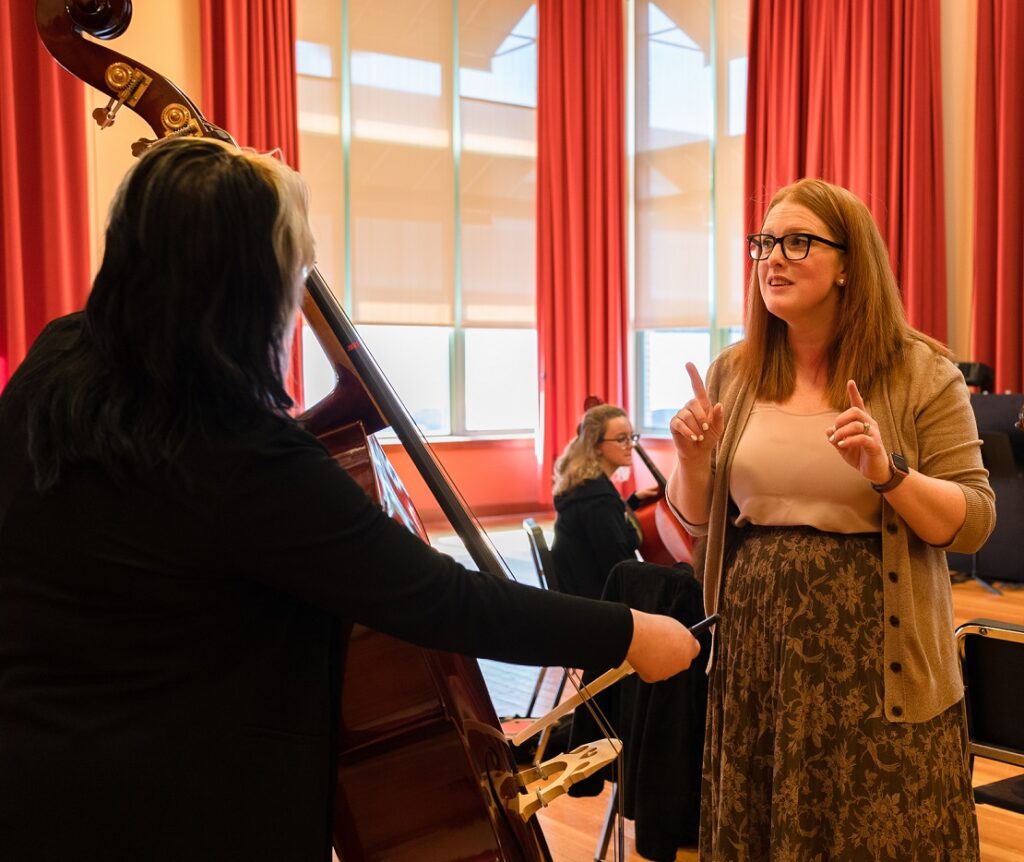Tagged Under:
Portal to Another World: A Role-Playing Game Enhances Beginning Violin Lessons
How do you engage beginning violin students? This music educator took his curriculum and created a role-playing game!
There is nothing quite like creating a role-playing game (RPG) for a multi-modal elementary violin classroom. I did it and saw dramatic improvements in student engagement and musical skills, and you can, too.
First, a little background. During the 2020-2021 school year, teaching violin to every early childhood and elementary school student at Harrisburg Academy required a bit of fantastical thinking. COVID health and safety protocols included masks, social distancing, daily health checks, student learning “pods” and offering synchronous online instruction five days a week. These measures kept students safe, but they upended the way curriculum was delivered and created an environment where teacher innovation became a necessity rather than a luxury.
Harrisburg Academy had instituted weekly group violin lessons for all students in 2019-2020. This was a boon to the strings program, but it came with a significant risk. At a tuition-based institution, if a program does not reveal its value to the education of the students, it (and potentially an entire position) can be quickly adjusted or removed. As a pragmatic teacher leading 23 classes per week, I had no expectations of turning my hockey-player 4th graders into committed violin students. However, I did need to find an educational solution that was deliverable, measurable, scalable and sustainable for me and those students who wished they could be somewhere else — anywhere else — than beginning violin.
An Idea is Planted
Within weeks of the start of school, my elementary school students were exhibiting behavior consistent with the toughest months of the year. Having grown comfortable with the new systems, and bored of their fixed peer group, students were testing any expectation and limit, and disengaging from the classroom experience. I needed a solution to energize and engage my classes.
One day, a middle school student enthusiastically told me about the Dungeons and Dragons club run by another teacher. I decided to follow his lead and do some research on RPGs. Unlike the video games of my childhood, RPGs are not driven by a specific goal. Instead, players are dropped into a world and must explore that world, engage with other players and determine their own path through the game.
In Dungeons and Dragons, these individual players must collaborate to accomplish tasks, solve puzzles, explore realms, battle foes and advance the story. Unlike traditional games, no one “wins” or “loses” in an RPG. Instead, community, communication and collective creativity become primary effects of the game play — all things that overlap with an effective classroom environment.
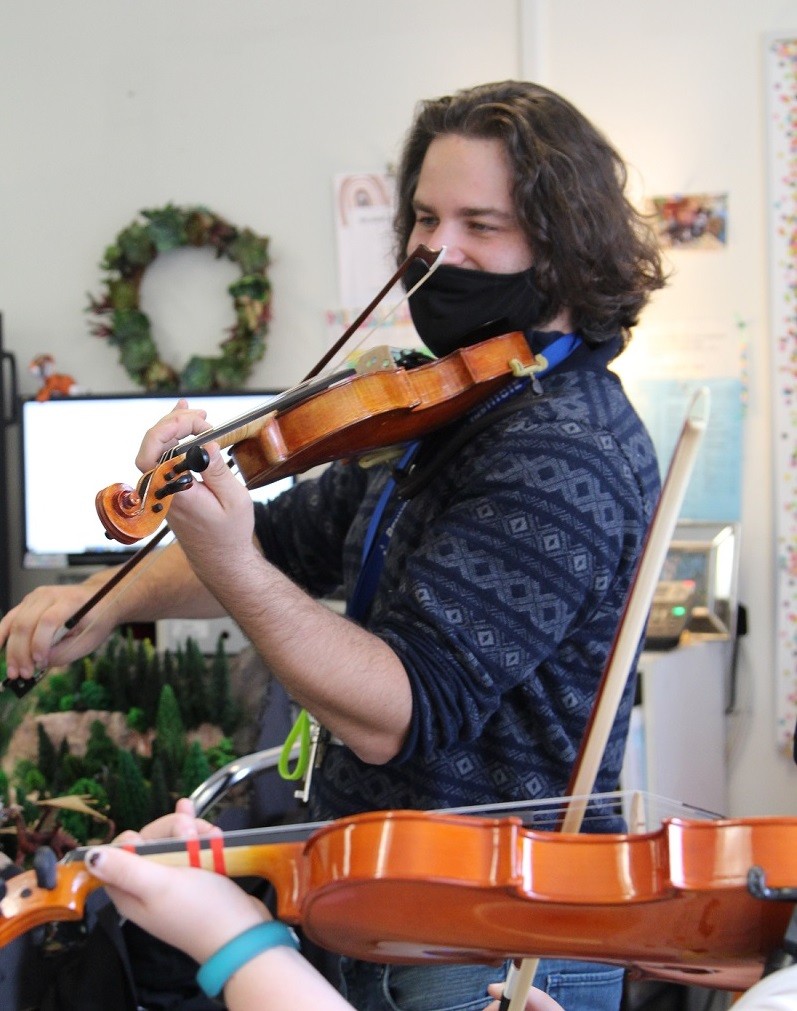 Traditional RPG systems have three fundamental components: describe, decide and roll. To begin, the description is given by the gamemaster (GM), and the players collaborate to decide their action. The action is controlled by the roll of a dice and the application of a “character sheet” that identifies strengths and weaknesses of each character. The effectiveness of the action is evaluated by the GM, and play continues. To use an RPG in the classroom, I replaced the action of rolling and analyzing data with actionable statements from my violin curriculum.
Traditional RPG systems have three fundamental components: describe, decide and roll. To begin, the description is given by the gamemaster (GM), and the players collaborate to decide their action. The action is controlled by the roll of a dice and the application of a “character sheet” that identifies strengths and weaknesses of each character. The effectiveness of the action is evaluated by the GM, and play continues. To use an RPG in the classroom, I replaced the action of rolling and analyzing data with actionable statements from my violin curriculum.
Building the RPG Framework
Harrisburg Academy is an International Baccalaureate (IB) school, which means that the curriculum is aligned with a set of traits we value in education called the “learner profile.” To replace rolling dice with actionable items, I converted these learner profile traits into conditional statements. For example, the value statement: “We nurture our curiosity, developing skills for inquiry and research” becomes “If something is learned, then new worlds are revealed.” In the conditional form, that statement becomes a tool to signify when to reveal a secret, a hidden world or possibly a plot twist.
By applying the same principle to all 10 of the IB learner profile traits, I created an action system that was immediately aligned with my existing curriculum and allowed the RPG system to serve the curricular needs of my classroom while also creating a positive environment.
It took a few weeks to develop the “wow” factor of this RPG before introducing it to the elementary school. I named my system “Novice to Ninja” and introduced it to 1st through 4th grade students in the first week of October 2020. Although I anticipated that the students would enjoy the new concept, I did not anticipate just how significant of a change would take place.
In the very first lesson, student collaboration locked into a supportive pattern — students unified around their goal and were eager to hear each other’s ideas and riff off of one another. Virtual students, who were participating from their homes, were able to tangibly affect change in the physical classroom through their suggestions. Both virtual and in-person students were able to demonstrate the skill at hand and banter effectively with their peers. Time has not diminished the enthusiasm nor the purpose for the students. As every lesson ends with a cliffhanger, students must apply and practice their scales and repertoire effectively outside of class in case that skill might be necessary to solve the puzzle the following week.
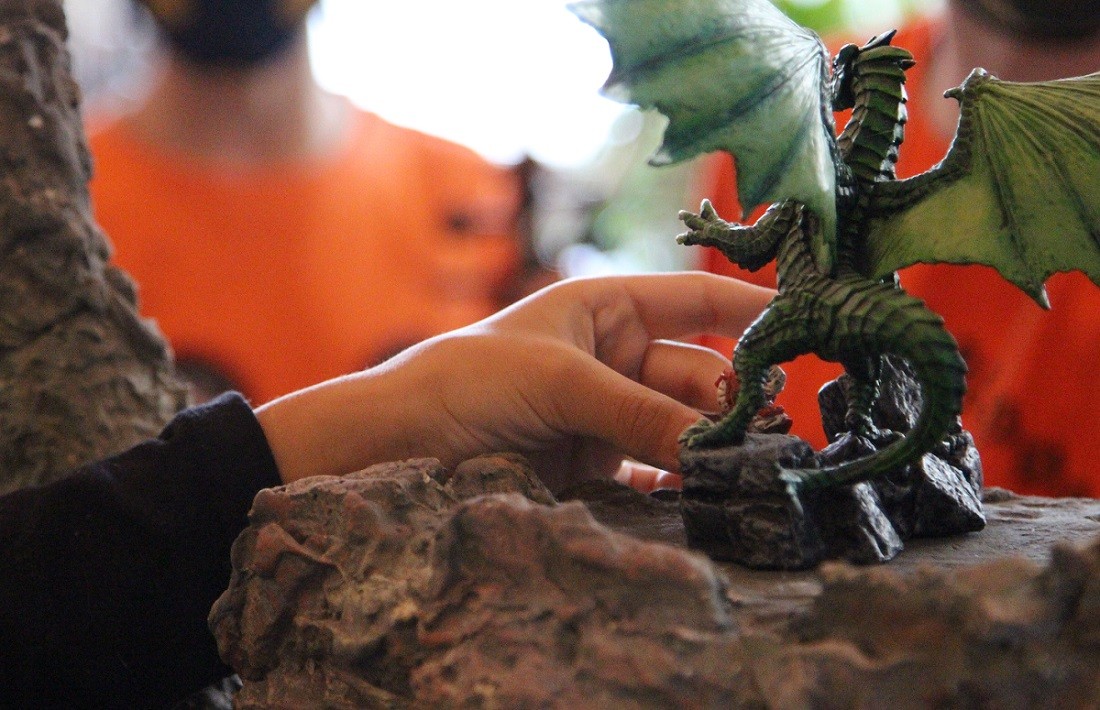 Using an RPG to deliver my violin content and curriculum through a world of wizards and mystery was just the escape that my students and I needed. As RPGs are built from the perspective of the GM, it’s easy to manage a classroom while delivering the story and teaching the lesson. Because the RPG community is so welcoming, I found an incredible wealth of resources that helped a GM novice like me build a world my students connect with and allow me to deliver my curriculum effectively. It is easy to do, and the results are among the most rewarding I’ve experienced in my teaching career.
Using an RPG to deliver my violin content and curriculum through a world of wizards and mystery was just the escape that my students and I needed. As RPGs are built from the perspective of the GM, it’s easy to manage a classroom while delivering the story and teaching the lesson. Because the RPG community is so welcoming, I found an incredible wealth of resources that helped a GM novice like me build a world my students connect with and allow me to deliver my curriculum effectively. It is easy to do, and the results are among the most rewarding I’ve experienced in my teaching career.
The Action System and the Fantasy World
The key to my successful gaming system was making the “action” about music creation. I developed conditional statements that were metrics for evaluating our performance as a group. After ransacking my curriculum maps, I converted my rubrics into statements like: “If we are unified, then our power grows.”
Suddenly, the success of the task students attempted, such as lulling a monster to sleep, could instantly be evaluated. Students were not handed a list of all the statements to choose from and apply. Instead, I scaffolded my delivery of them at appropriate times.
Once an action system is planned out, finding the premise for the entire world is critical. This is the essential question, or governing statement, that will drive the entire world. Again, I used my existing curriculum to arrive at the premise: “Violin is our tool, and music has power.”
From this point, I converted the existing units of my curriculum into challenges and tasks. I made skills and repertoire solutions to puzzles and challenges. For example, “What is a scale, and how does it function?” became the premise for climbing the treacherous steps of a mountain and breaking the enchantment of a hidden castle. (Nothing breaks the spell of music better than a technical exercise.)
Learning to read notation was the key to deciphering a wizard’s secret code. And analyzing the form of their song correctly could put the sections of a tower in order. By the end of the first unit, I had a story where we escaped a shipwreck, scaled a rocky cliff, met a wizard and began a quest using music and technique. I just needed a world for this adventure.
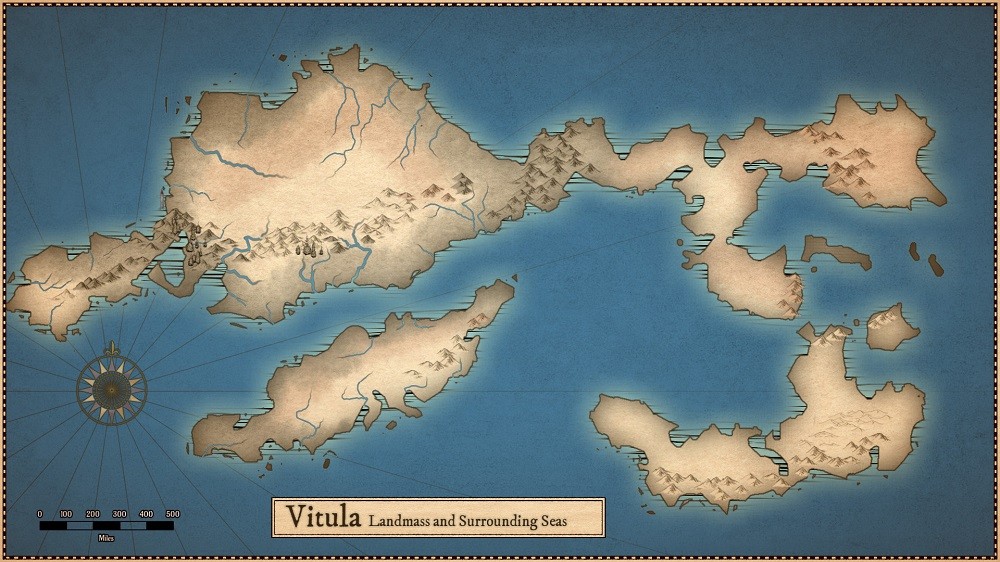 I named the world Vitula, which is the medieval Latin name for the group of instruments that ultimately became the violin family. In building the framework for Vitula, I needed a fantasy realm that allowed me to be spontaneous, creative and flexible. I love manipulatives and designing sets for theater, so I constructed a world that required diorama components to describe it. By incorporating digital elements, I connected the experience of the classroom with our online students to illustrate that they are integral in our community.
I named the world Vitula, which is the medieval Latin name for the group of instruments that ultimately became the violin family. In building the framework for Vitula, I needed a fantasy realm that allowed me to be spontaneous, creative and flexible. I love manipulatives and designing sets for theater, so I constructed a world that required diorama components to describe it. By incorporating digital elements, I connected the experience of the classroom with our online students to illustrate that they are integral in our community.
My violin program extends for seven years — from preschool through 5th grade, so I built an elaborate world that would engage students long-term. Because performance expectations for my students change from year to year, I chose not to specify performances and repertoire as requirements to advance the action. The overarching story incorporates themes, ideas and characters that are easily adjusted to the ever-changing curriculum demands of a modern school system.
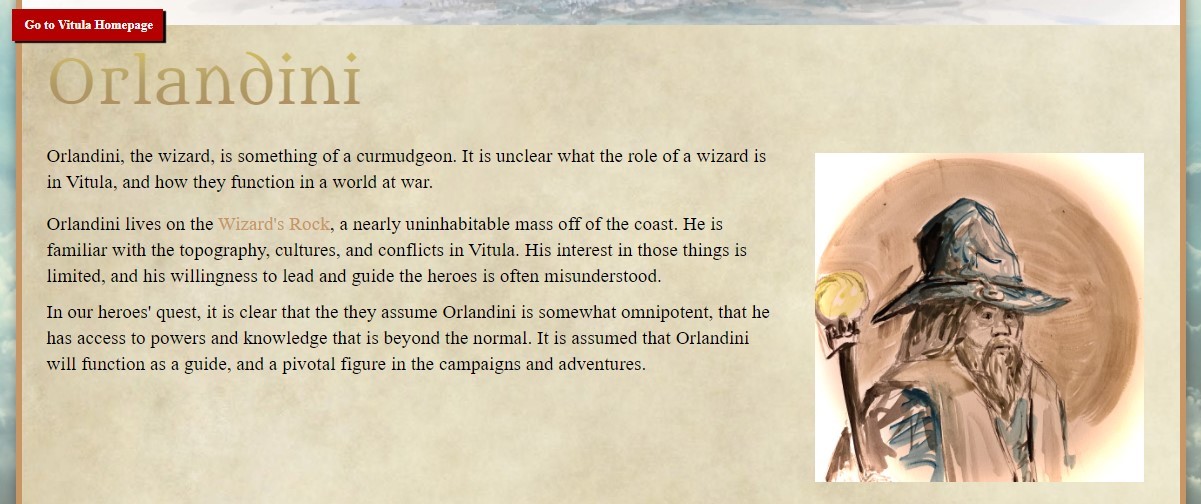 The first two years (known as “books”) of the story are completed. Book 1, entitled “Which Side Are You On?,” introduces the conflicts, factions and varying perspectives of individuals within Vitula. Students interact with fictionalized versions of musical figures and locations, including Val di Fieme, Ole Bull, Il Canone and the wizard Orlandini (named after an Italian luthier).
The first two years (known as “books”) of the story are completed. Book 1, entitled “Which Side Are You On?,” introduces the conflicts, factions and varying perspectives of individuals within Vitula. Students interact with fictionalized versions of musical figures and locations, including Val di Fieme, Ole Bull, Il Canone and the wizard Orlandini (named after an Italian luthier).
In Book 2, entitled “Becoming,” the story continues as students engage with professors of a conservatory system apparently in its final gasps. Interacting and learning from fictionalized figures, such as Hildegard von Bingen, Josquin des Prez and Barbara Strozzi, students discover more than the scientific roots of music. They find a secret lurking just beyond the walls of the school — a secret that has the power to change everything.
Components of an Immersive World
In my RPG classroom, the physical objects and description of the “Novice to Ninja” story defined the expectations and plans for the class, putting emphasis on the components that create the immersive experience. These are the key components I have found to make a significant contribution to the classroom experience.
Every world needs a map, and typically maps that are global, regional and local. A quick internet search for “map-making software” opened up a Pandora’s box of possibilities and instructional videos. By starting with a video that introduced the top free software programs, I was able to identify precisely what I needed.
Every world needs multi-faceted characters. Instead of intricately crafting imaginary peoples and cultures, I elected to use fantasy tropes that are already available. With a quick internet search, I found a trove of stories, histories, factions, classes and possible characters that could populate my world. I decided to select multiple factions, monsters and possible races that could 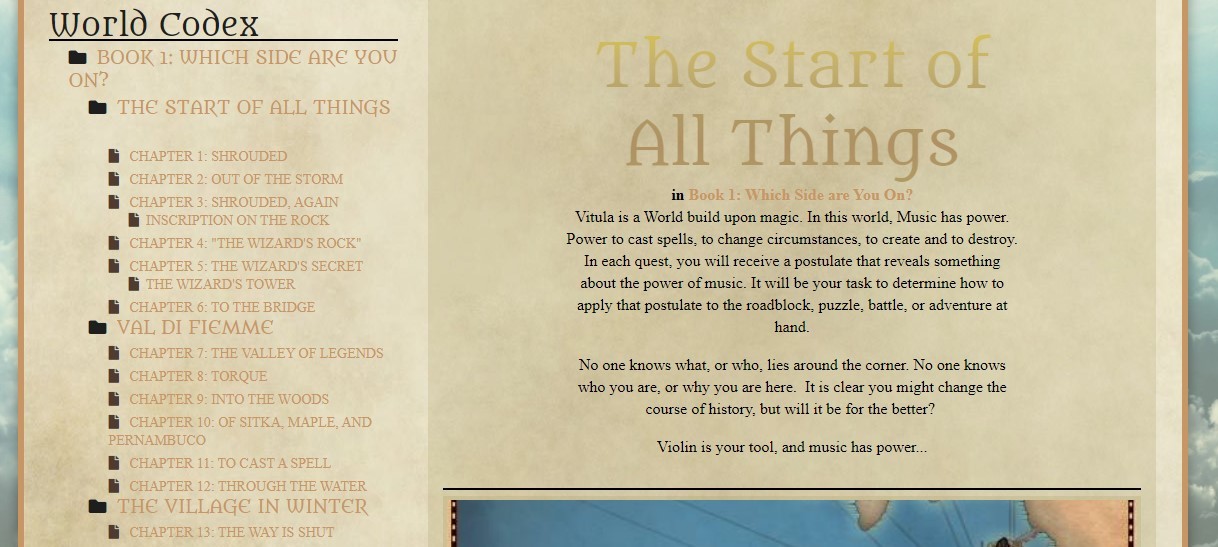 credibly populate my world. I did not pick specific characters that already existed because I wanted the freedom to develop my own.
credibly populate my world. I did not pick specific characters that already existed because I wanted the freedom to develop my own.
Every world needs documentation. Whether music manuscripts, spells or guides, the documents describe the fantasy world’s time and place. Again, I incorporated my existing worksheets and standard repertoire, but inserted artwork, map detail and quotations from class that provided specific reference points to my fantasy world.
Remarkable Reception and Results
The outcomes in my classroom have been dramatic. Discovery and agency have embedded themselves in the way students approach technique. Their skills have significantly improved as the skills are not their goal. Finally, the drive for excellence has a framework other than personal expression and peer competition.
Students engage in the curriculum because they are engaged in the story, the process and the community. Synthesizing information and inferring from learned skills are crucial to solving puzzles that seem open-ended in the RPG. Collaboration has increased because the community’s success in each puzzle requires the creativity of many minds. Moments of reflection have also grown into a paradigm of reflection. The students are locked into the story and discuss solutions, what-if scenarios and dream about what secret will be unlocked.
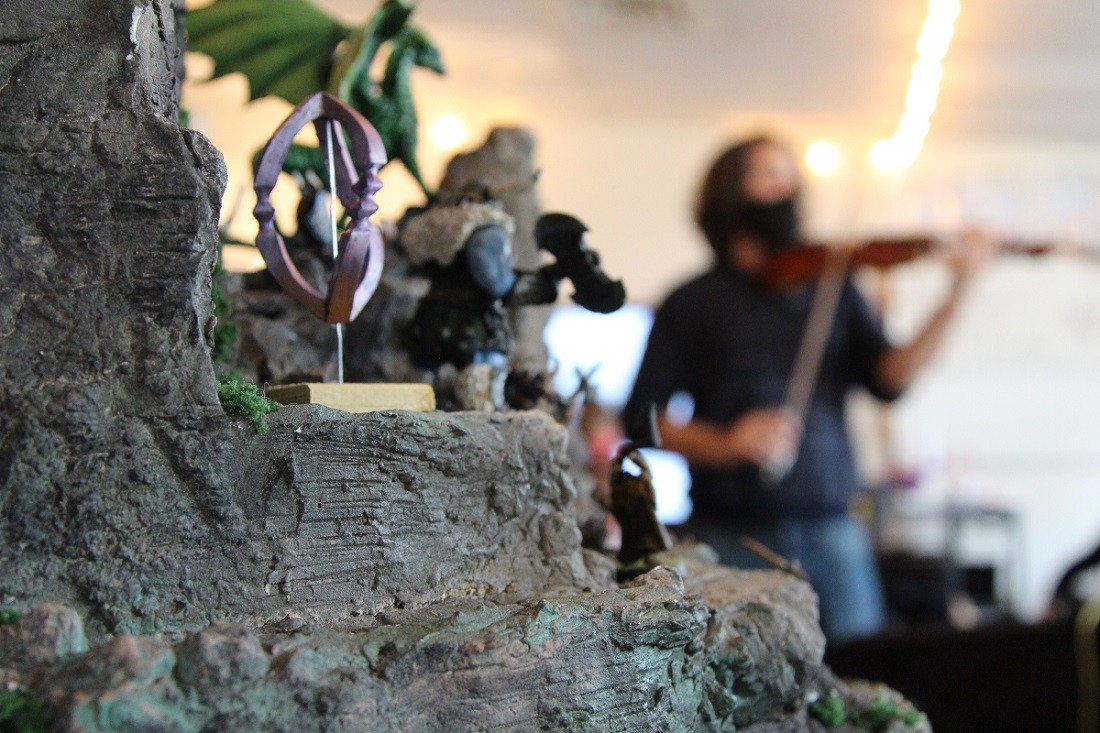 When all of this is achieved, the true power of the RPG is unleashed. By using an RPG in the classroom, I share about our real world and teach music in a way that builds wonder, respect and joy as well as increases skill level. It feels great to finally hear a beginning violinist plead, “Mr. Gamon, will you please teach me to play a scale?”
When all of this is achieved, the true power of the RPG is unleashed. By using an RPG in the classroom, I share about our real world and teach music in a way that builds wonder, respect and joy as well as increases skill level. It feels great to finally hear a beginning violinist plead, “Mr. Gamon, will you please teach me to play a scale?”
As a specialist in a pre-K-12th grade learning environment, utilizing an RPG has allowed me to share out into the homeroom and academic courses. Instead of working to incorporate academic units into my music curriculum, I am able to show how my tasks and assessments align with the core classroom units and to share assessment results and strategies.
Students build their own notebooks (entitled “A Hero’s Journey”) on their voyage of discovery, unaware that what they are carrying is a portfolio of their assessments and data on their growth as musicians and individuals. As the skills that are being taught are embedded in an adventure, students have been able to discuss how music skills impact the game play. This interaction allows them to draw parallels between this fantasy world, their own and build community.
For me, the magic is not in the fantasy world we created, but what is occurring in the classroom. As it turns out, when you open a portal to another world for your students, everything is possible.
A version of this article appeared in PMEA News, the publication of the Pennsylvania Music Educators Association. Reprinted with author’s permission.













